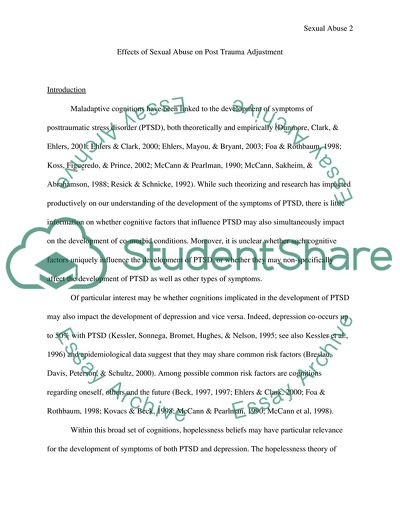Cite this document
(Effects of Sexual Abuse on Post Trauma Adjustment Case Study, n.d.)
Effects of Sexual Abuse on Post Trauma Adjustment Case Study. Retrieved from https://studentshare.org/psychology/1712031-sexual-identity-disorder-and-the-effects
Effects of Sexual Abuse on Post Trauma Adjustment Case Study. Retrieved from https://studentshare.org/psychology/1712031-sexual-identity-disorder-and-the-effects
(Effects of Sexual Abuse on Post Trauma Adjustment Case Study)
Effects of Sexual Abuse on Post Trauma Adjustment Case Study. https://studentshare.org/psychology/1712031-sexual-identity-disorder-and-the-effects.
Effects of Sexual Abuse on Post Trauma Adjustment Case Study. https://studentshare.org/psychology/1712031-sexual-identity-disorder-and-the-effects.
“Effects of Sexual Abuse on Post Trauma Adjustment Case Study”, n.d. https://studentshare.org/psychology/1712031-sexual-identity-disorder-and-the-effects.


